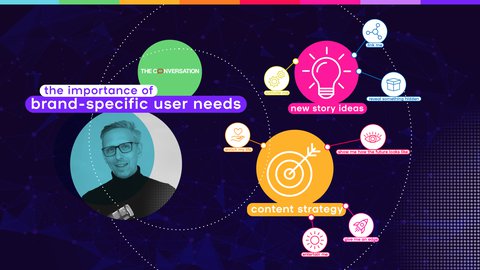The beauty of working with smartocto, is that everyone can decide for themselves which metrics to prioritise. DailyCoin, a news site about cryptocurrency, has recently focused on 'read depth' by devising a challenge for their editors.
“I wouldn’t say we are particularly focused on read depth, but we were looking for something to bring our team together while also pushing them to be better writers”, says Heather Budrevičienė, their editor in chief.
—----------------------------
What is read depth?
'Read depth' is a metric designed to gauge the extent to which a visitor engages with a piece of content - and how far through it they get before losing interest, clicking or scrolling away. This metric considers several factors: the actual time spent paying attention to the content, the length of the text, scroll depth, and the average duration required for a reader to digest the content. It focuses exclusively on the article's main body, excluding all other page elements.
Smartocto assumes a reading speed of 300 words per minute, so if scrolling stops halfway, this - combined with the other indicators mentioned above - would show a read depth of around 50% because it wouldn’t be possible to finish an article without scrolling to the end - so in this way, scroll depth can trump other factors.
—----------------------------
Why is read depth important?
At the onset of summer, Heather and her team devised a strategy to enhance the depth of reading. "We discovered that our writers weren't performing to their fullest potential, and some were significantly outshining others. Our approach was to pair them up, aiming to collectively elevate our standards."
The objective was to get readers to read further through articles than they had been. This is crucial for DailyCoin, because the majority of its traffic originates from Google (Discover). "A prominent position is awarded by Google when it observes that readers spend more time on a page. It signifies that we're delivering high-quality content. Additionally, from a business standpoint, it's advantageous as it increases the likelihood of visitors encountering more advertisements."
However, Daily Coin does not want to place excessive emphasis on this aspect. "I wouldn't claim that we were attempting something earth-shattering with this read depth competition. It was simply more feasible for me to handle the metrics as presented by smartocto. The essence of this challenge was to refine our articles, making them more reader-friendly."
What was the reward for the best read depth writer?
"We organised a 'king of the hill' competition. The writer with the highest score was crowned the king. When someone surpassed them, they received a cash prize. We also maintained weekly leaderboards where the top performer received an additional reward. The most enjoyable aspect was seeing them analyse what made an article successful. They shared tips to enhance their content. Since they all work remotely, this fostered a sense of camaraderie."
The results are primarily visible on DailyCoin’s website. For example, consider this article that discusses five altcoins dominating the Top 50. It starts with bullet points summarising the content. Subheadings effectively outline what readers can expect from each paragraph, and the article concludes with a 'Why this matters' section, emphasising its relevance. Most websites start with this approach.
"We already had this structure," Heather says, "but some colleagues could still learn from how it was implemented. What struck me about this challenge was the positive feedback they gave each other, which is normally reserved for pointing out errors in articles."



